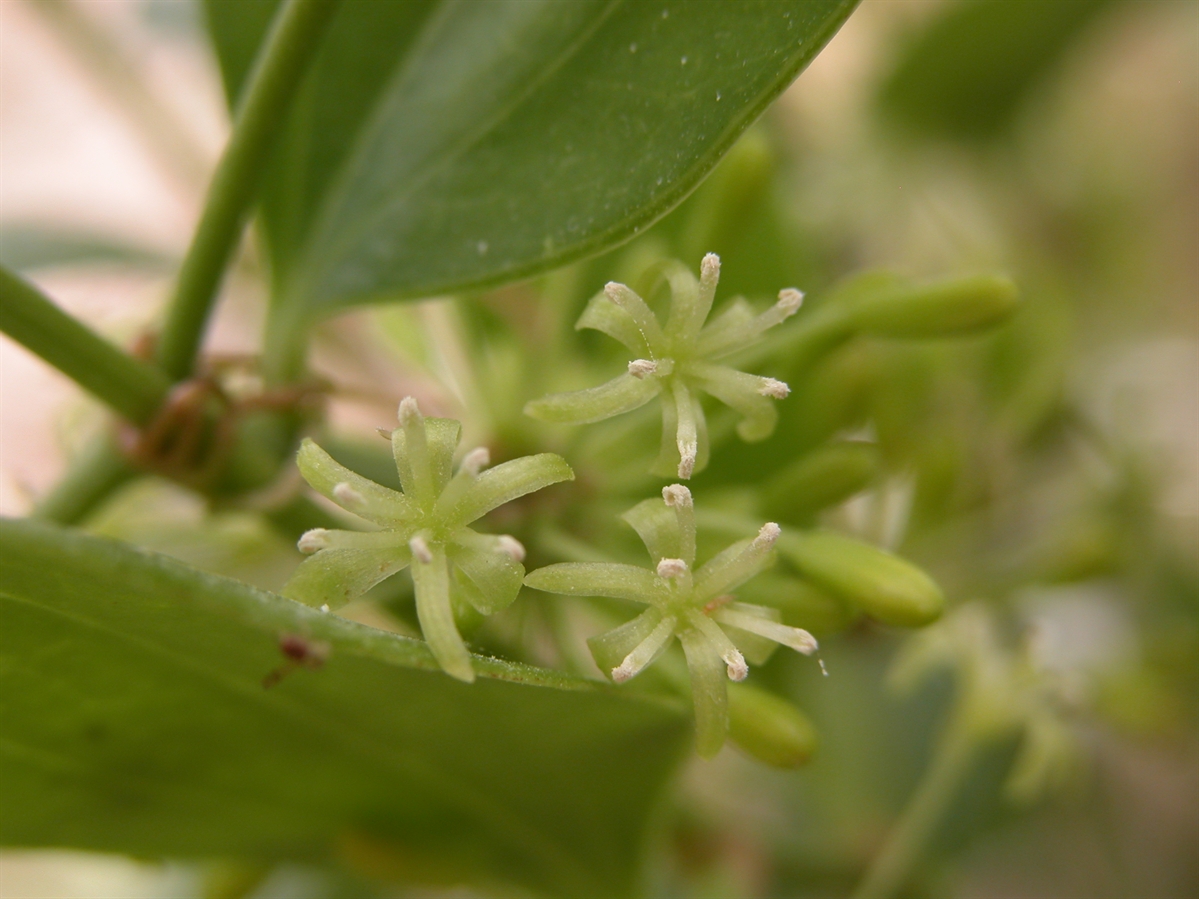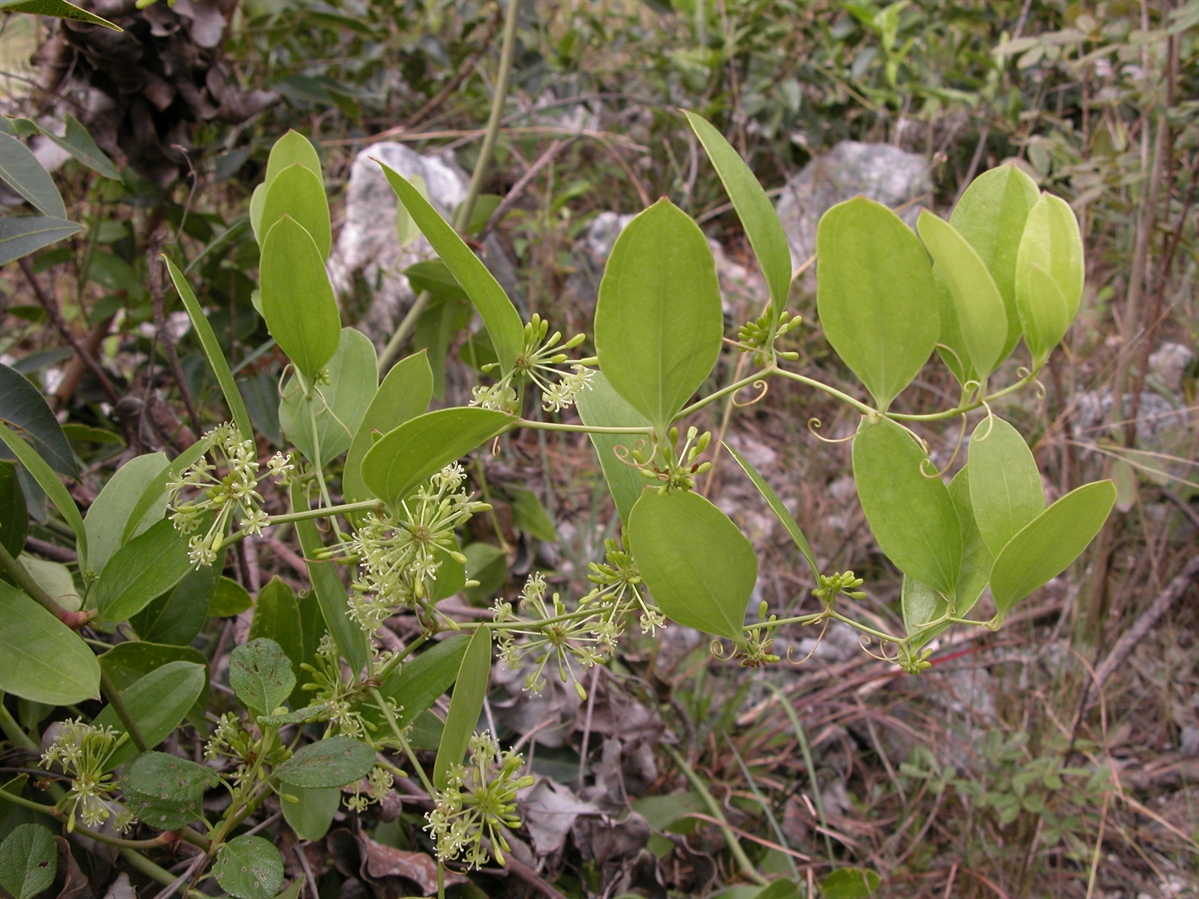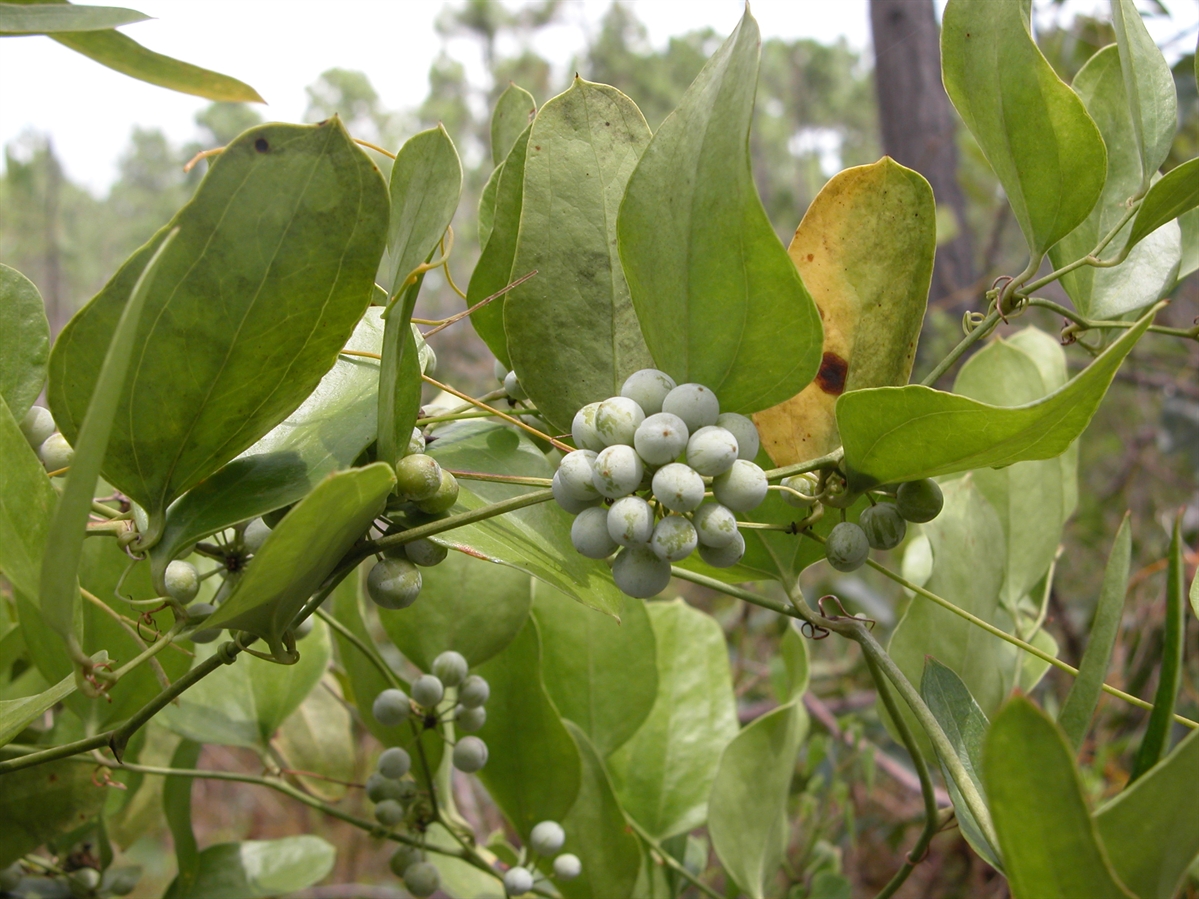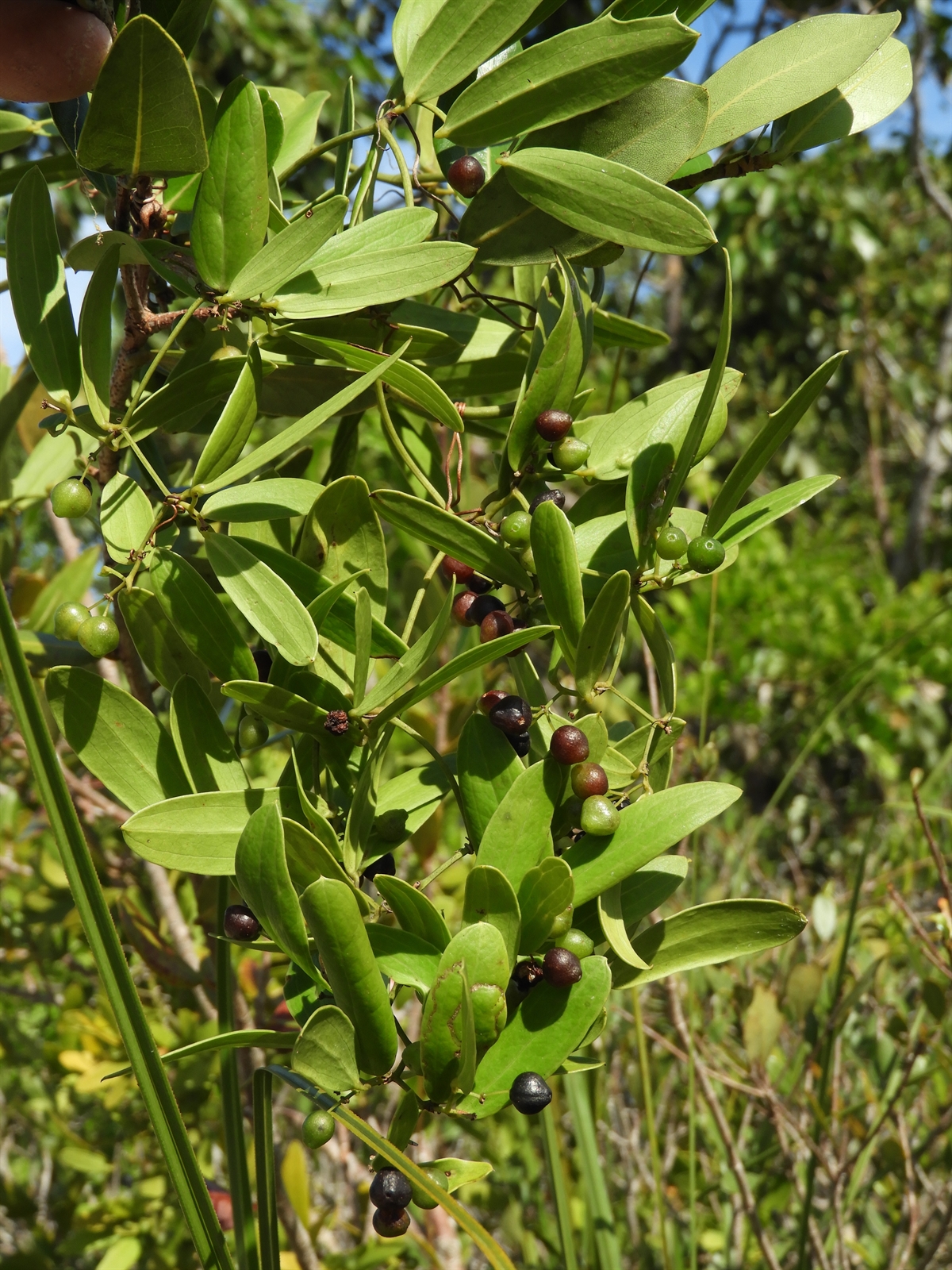Habit: Smilax havanensis grows as a semi-woody vine that climbs over other vegetation. The stems may have short prickles along them. The leaves are arranged alternately and are up to 15 centimeters long with a pointed leaf tip. The leaves are ovate shaped and the margins may or may not have spines. At the base of the petiole are stipular tendrils.
Smilax havanensis is monoecious. The incomplete, imperfect, actinomorphic flowers are arranged in umbels. The calyx has 3 unfused sepals. The corolla has 3 unfused petals that are greenish white. In staminate flowers there are 6 fertile stamens and no carpel. In carpellate flowers there are no stamens and the ovary is superior with 3 locules and multiple ovules. The fruit is a bluish black berry at maturity and contains 2 – 3 seeds.
Habitat: Smilax havanensis grows in Dry Broadleaf Evergreen Formations (Coppice), Pine Woodlands and Human Altered environments
Distribution: Smilax havanensis occurs throughout all the islands of the Lucayan Archipelago as well as southern Florida and the Caribbean region.
Medicinal/Cultural/Economic usage: Smilax havanensis has been used in the Lucayan Archipelago in strengthening teas. The berries have been fermented to make alcohol.
In south Florida the roots of Smilax havanensis and related species were collected and used by native Americans and settlers as a food source. The roots were mixed with corn flour and grease and then fried. The young tips were collected and eaten like asparagus.
A related species S. guianensis from Dominica was used to treat gonorrhea by taking the roots and mixing the material with water and the viney stems were used for basket making.




